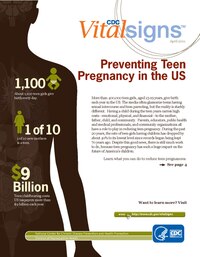
Photo from wikipedia
OBJECTIVE This qualitative study explores how adolescents and young women perceive the need for and describe the use of dual method contraception. STUDY DESIGN We interviewed 20 sexually active women… Click to show full abstract
OBJECTIVE This qualitative study explores how adolescents and young women perceive the need for and describe the use of dual method contraception. STUDY DESIGN We interviewed 20 sexually active women aged 16-24 who attended an adolescent-focused Title X family-planning clinic and were using a non-barrier contraceptive method. We used a semi-structured interview guide that included domains related to sexual activity, knowledge of and use of contraceptives and condoms, and relationship factors. We coded transcripts using grounded theory techniques and used an iterative process to develop overarching themes. RESULTS Dual method contraceptive users primarily discussed pregnancy prevention as their motivating factor. Many expressed anxieties over an unplanned pregnancy and reported condom use as "back-up" contraception. Risk perception for pregnancy or STI acquisition did not necessarily change as relationship trust increased, but rather, their anxiety regarding the negativity of such outcomes decreased. Dual-method contraception use decreased when participants reported that condoms were not readily available, or when they self-described immaturity. Less frequently, participants reported dual method use for sexually transmitted infection (STI) prevention, and many substituted STI testing for condom use. Contraceptive type (short-acting vs. long-acting) did not influence reported attitudes towards dual method use. CONCLUSION Health educators and clinicians encourage condom use in young women due to the significant morbidity associated with STI acquisition. Most participants in our study view condoms as a way to improve pregnancy prevention. Acknowledging and addressing this divergence in motivation will allow caregivers to improve strategies for communicating the importance of dual method use. IMPLICATIONS Young women primarily describe pregnancy prevention as the reason for dual method use, STI protection is less salient. Consideration of this viewpoint by health educators and clinicians will allow us to communicate more effectively to prevent STI morbidity.
Journal Title: Contraception
Year Published: 2017
Link to full text (if available)
Share on Social Media: Sign Up to like & get
recommendations!